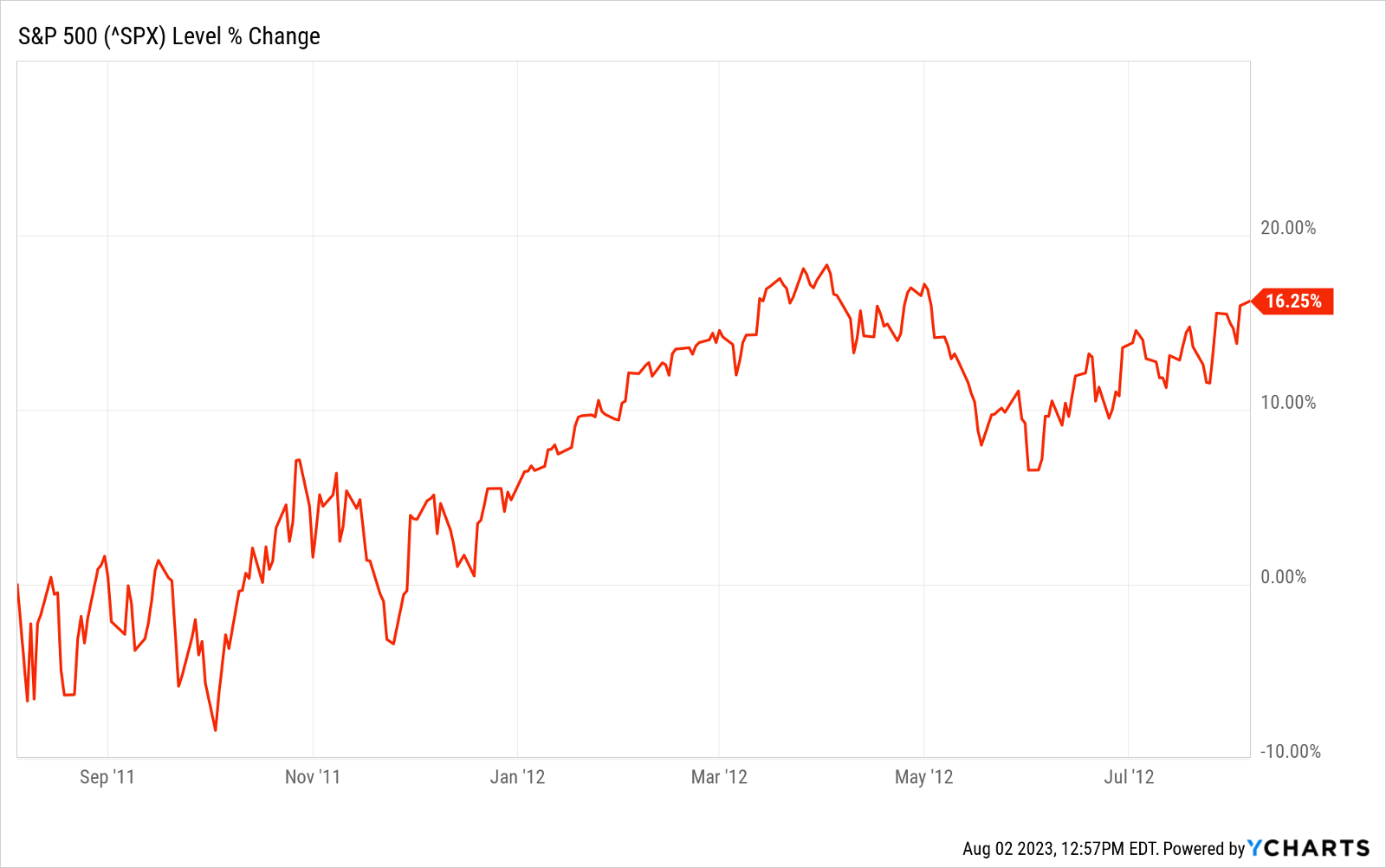
An exceedingly rare downgrade of the U.S. government's credit rating sparked a selloff in stocks Wednesday, but experts say any longer term fallout for both the equity and debt markets should be muted.
To recap: after the stock market closed Tuesday, Fitch Ratings cut the United States' long-term foreign-currency issuer default rating by one notch to AA+ from AAA. The credit ratings agency also removed its negative rating watch on the U.S. and assigned a stable outlook in its place.
Fitch cited a "high and growing general government debt burden" and the "erosion of governance" as reasons for cutting the government's rating.
"The repeated debt-limit political standoffs and last-minute resolutions have eroded confidence in fiscal management," Fitch said in a statement.
Fitch's downgrade represents only the second time in history that the U.S. has seen its credit-worthiness marked down. Standard & Poor's (SPCI) took the once unthinkable step of cutting the federal government's long-term credit rating back in August of 2011. S&P's move came after a prolonged fight over raising the debt ceiling put the U.S. in danger of a technical default on its financial obligations.
In that regard, Fitch, which is one of the so-called Big Three credit ratings agencies along with S&P and Moody's (MCO), is sort of late to the game, experts say.
Credit downgrade doesn't mean much
Bearish strategists wonder if the Fitch downgrade will finally break the market's feverish momentum. The Nasdaq Composite is up by more than a third on a price basis so far this year, while the broader S&P 500 has added about 18%. The blue-chip Dow Jones Industrial Average, for its part, has gained roughly 7%. Such remarkable returns are divorced from economic fundamentals, bears contend, meaning it's only a matter of time before our cyclical bull market comes to an end.
"The big news is the knock-on effect of the Fitch downgrade has exerted on the risk-on trade," writes David Rosenberg, founder and president of Rosenberg Research. "This is what it took to shake the market out of its complacency?"
Rosenberg adds that Fitch's downgrade means "any further prospect of fiscal juice for the U.S. economy is off the table."
Be that as it may, most economists and strategists are taking a more sanguine view of the situation. And there's certainly some comfort to be found in historical precedent. After all, S&P cut the federal government's credit rating a dozen years ago to no obvious long-term deleterious effect.
"The downgrade should have little direct impact on financial markets as it is unlikely there are major holders of Treasury securities who would be forced to sell based on the ratings change," writes Goldman Sachs Chief Economist Jan Hatzius. "S&P downgraded the sovereign rating in 2011, and while it had a meaningfully negative impact on sentiment, there was no apparent forced selling at that time."
Besides, the way in which federal debt is classified at the institutional investor level makes worries about forced selling overblown, the economist says.
"Because Treasury securities are such an important asset class," notes Hatzius, "most investment mandates and regulatory regimes refer to them specifically, rather than AAA-rated government debt."
Perhaps most importantly, the Fitch downgrade doesn't tell investors anything they didn't already know.
"Fitch's downgrade mainly reflects governance and medium-term fiscal challenges, but does not reflect new fiscal information," Hatzius writes.
What did stocks do last time?
Perhaps some solace can be found in looking at what stocks did the last time this happened. S&P downgraded the United States' credit rating on August 5, 2011. The broader market was volatile, trading mostly sideways for the next couple of months, until it bottomed in early October. The S&P 500 lost about 8% over that span.
Have a look at where the market stood six months after the downgrade and you'll see a much more chipper chart. The S&P 500 was up about 12% on a price basis at that point. One year after the downgrade, the market had tacked on 16%.

As for the really long view, in the nearly 12 years since the last time the U.S. caught a credit downgrade, the S&P 500 has generated an annualized total return (price change plus dividends) of 14%.
The bottom line is that while the Fitch ratings cut is by no means good news, it should hardly top the list of things keeping long-term retail investors up at night.







